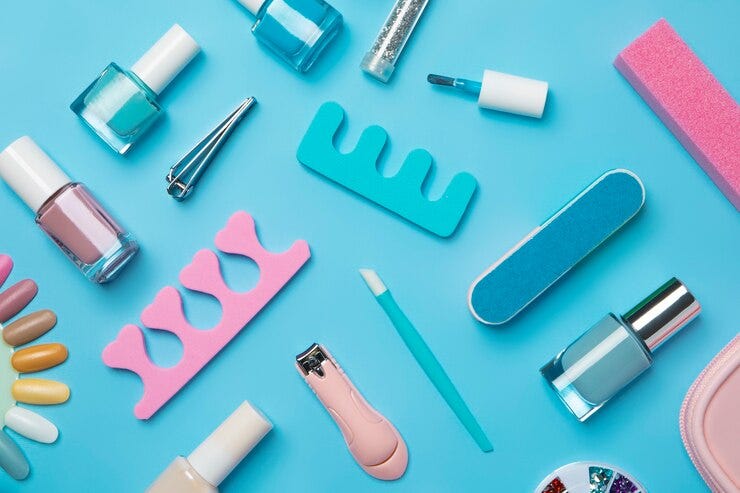In the modern world, personal grooming is more than just a routine—it’s a form of self-care, self-expression, and a critical aspect of day-to-day life. Those devoted to their style and aesthetic can attest to the power of a well-assembled beauty toolkit. An arsenal of the right products and tools can transform anyone’s morning from a rushed session in front of the mirror to a pampering moment of creativity and personal enhancement.
So, what exactly is a beauty toolkit? Why are they important, and how can you assemble one that works best for you?
Understanding Your Beauty Toolkit
At its core, a beauty toolkit is simply a collection of products and tools that cater to your personal hygiene and aesthetic needs. It’s where all your go-to items live – from makeup brushes to tweezers, hair straighteners to razors, and everything in between. Essentially, it’s an essential part of your daily routine that helps you put your best face forward.
There’s no one-size-fits-all approach when it comes to beauty toolkits. Everyone has unique needs, preferences, and budget constraints. So how do you go about creating a beauty toolkit that works for you?
Essential Beauty Tools
Skincare Essentials
The first category in our toolkit is skincare, the foundation of a polished appearance. At the bare minimum, this section should be stocked with a gentle cleanser, a hydrating moisturizer, an effective sunscreen, and if necessary, a treatment for specific skin concerns. Skincare tools like jade rollers, spatulas for product application, and high-quality facial cleansing brushes also deserve a place in your collection for their proven benefits in enhancing skincare absorption and efficacy.
Makeup Must-Haves
Makeup can be the artist’s palette of your beauty toolkit, helping you to enhance your features or transform your look entirely. The necessities here are versatile and can be personalized, but generally include a high-coverage concealer, a multi-purpose palette with flattering eyeshadow shades and bronzer, a long-wearing foundation or tinted moisturizer, and, of course, a set of quality brushes and sponges for seamless application.
Haircare Tools
Great hair days don’t happen by accident. The haircare section demands attention to the type of hair you have and the best tools for maintaining it. From boar bristle brushes for distributing natural oils to wide-tooth combs for gentle detangling, your toolkit must cater to the specific needs of your hair texture. Additionally, dependable hair shears, hairdryers, straighteners, and curling irons can significantly reduce styling time and effort, providing long-lasting salon-quality results.
Nail Care Essentials
Discerning beauty enthusiasts know that well-kept nails can be as expressive as an impeccably styled mane. Basic nail care requires quality clippers, files, and buffers to maintain shape and order. Add in a nourishing cuticle oil for healthy nail growth and a few dynamic nail polish shades for a pop of personality, and you’ve completed this section of your grooming toolkit.
Tips for Flawless Grooming
Each tool in your beauty toolkit is only as good as the skill with which it’s applied. Here are some tips to ensure you’re making the most of these essentials:
Skincare Routines
Consistency is key. Establish a morning and evening skincare regimen and follow it religiously. Ensure that your tools are sanitized and that you’re using the correct techniques for application. Learn to listen to your skin as it may need different care on different days.
Makeup Application Techniques
Take the time to learn the right application techniques for different products. Whether it’s blending your foundation with a damp beauty sponge or creating the perfect winged liner with an angled brush, practice makes perfect in the world of makeup.
Hair Styling Tips
Preparation is fundamental for hair styling. Use heat protectant sprays before using hot tools, and consider the effects of different products and techniques on your hair. For every day, learn a few quick hairstyles that you can rely on, and for special occasions, don’t be afraid to invest in a professional’s touch.
Nail Care Practices
Avoid excessive trimming of cuticles and always file in one direction to prevent breakage. Treat your nails to a spa day every once in a while with exfoliation and a nourishing mask. Lastly, choose nail colors that complement your skin tone and outfit.
Conclusion
Adopting a comprehensive beauty toolkit into your life can be the beginning of a more refined personal grooming routine. By prioritizing skincare, makeup, haircare, and nail care, you’re not only addressing your external self but also engaging in a form of self-expression and appreciation. Every stroke with the makeup brush, every conditioning treatment, becomes a ritual that allows you to appreciate the canvas that is uniquely you.

